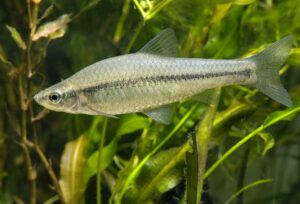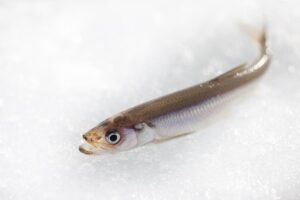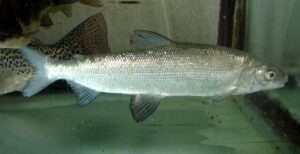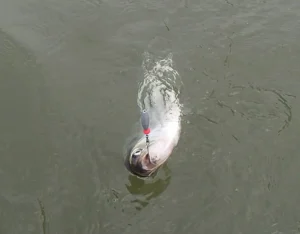Panfish : Roach (Rutilus rutilus)
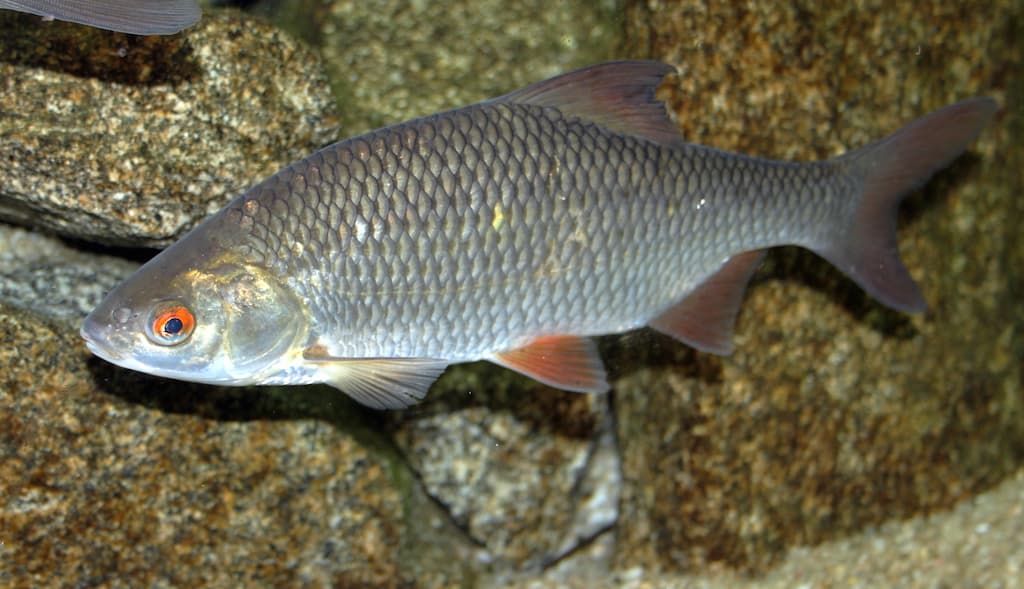
The Roach (Rutilus rutilus) is a popular panfish species found in freshwater bodies. Known for its spindle-shaped body and silver scales, the Roach is often mistaken for other fish species such as the Rudd and the Ide.
It is a common inhabitant of rivers and lakes in Europe, forming large shoals composed of numerous individuals. Anglers are drawn to the Roach for its elusive nature, as it quickly spits out bait, posing a challenge even for experienced anglers. Roach can be found in the lower part of the water column and are appreciated for their culinary value, particularly when fried. They are also used as a resilient live bait for predatory fish.
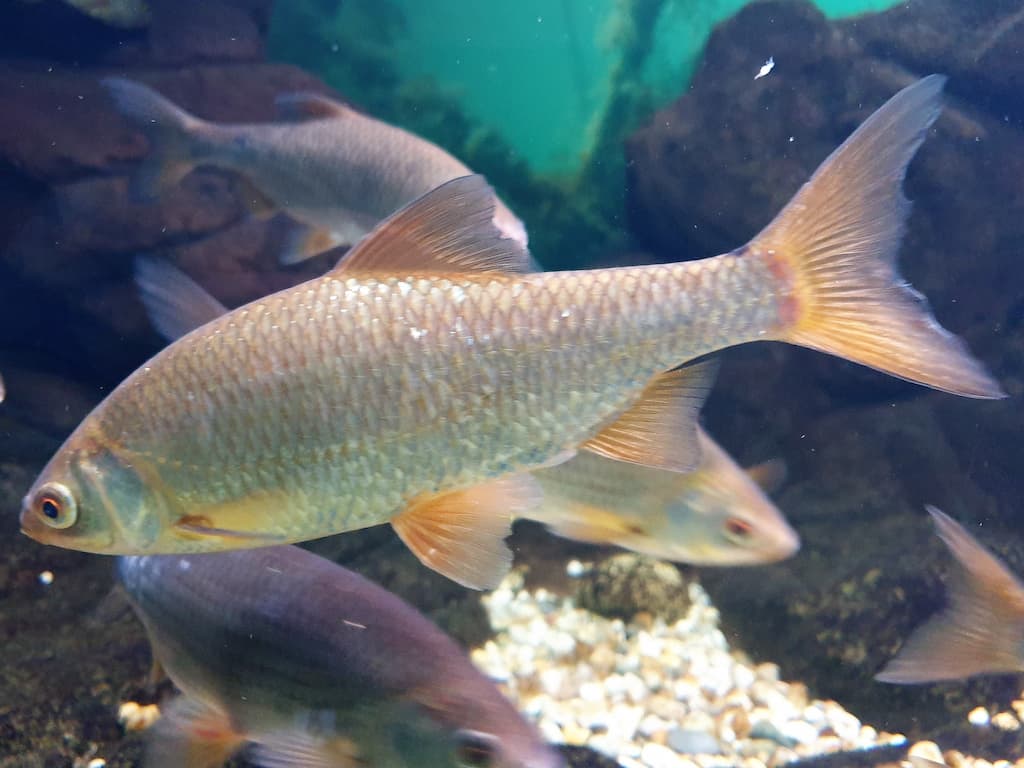
Description of the Roach (Rutilus rutilus)
Determination
The Roach (Rutilus rutilus) is a freshwater fish highly favored by coarse anglers. Morphologically, the Roach shares similarities with the Rudd and the Ide. It has a fusiform body shape, slightly compressed laterally, with a bulging back and belly.
The Roach has a small head with relatively large eyes, featuring a reddish iris (which gives it the name “Rutilus rutilus”), distinguishing it from the Ide and the Rudd, whose iris is yellow. The lower jaw of the Roach slightly protrudes beyond the upper jaw, resulting in an oblique and upward-oriented mouth.
Its pectoral, dorsal, and anal fins have soft rays, while the pectoral, pelvic, and anal fins display an orange-red coloration, with the dorsal fin being gray. A notable differentiating feature between the Roach and the Rudd is that their dorsal and pelvic fins insert at the same level on the body.
The Roach has a dark green to brownish-green back, silver sides with bluish reflections, and a reddish-white belly with golden hues. The dorsal and caudal fins are grayish, while the pelvic, anal, and pectoral fins are orange-reddish. The Roach has large, rounded, shiny scales that easily detach, contributing to the golden reflections on its sides.
| Class |
| Actinopterygii |
| Order |
| Cypriniformes |
| Family |
| Cyprinidae |
| Genus |
| Rutilus |
| Species |
| R. rutilus |
| Binomial Name |
| Rutilus rutilus (Linnaeus, 1758) |
Size and Weight
Roach typically measure between 10 and 30 cm (6 to 12 in) in length and weigh between 10 and 200 grams (0.35 to 7 oz). However, some individuals can grow up to 50 cm (20 in) and weigh around 2 kg (4 lb 7 oz). The world record for the largest Roach caught is a fish measuring 56 cm (22 in) and weighing 3.13 kg (6 lb 14 oz).
Longevity of the Roach (Rutilus rutilus)
The Roach has an average lifespan of about 10 years, although some individuals can live up to 15 years.
Habitat and Lifestyle
Habitat
The Roach is widely distributed across central and western Europe, ranging from the Pyrenees to the Ural Mountains. It is absent from northern and southern regions. Roach prefer bodies of water with low currents, such as rivers, canals, calm lakes, and ponds. However, they are rarely found in the upper reaches of streams and mountain rivers. Roach typically dwell near the bottom of the water but occasionally surface, revealing their presence.
Dietary Habits
Unlike the Rudd, the Roach primarily feeds at the bottom. Its diet is highly diverse, consisting of small crustaceans, larvae, plant debris, mollusks, and worms. The Roach is an omnivorous species, capable of becoming exclusively herbivorous when necessary, resulting in smaller-sized individuals.
It exhibits increased feeding activity during the night and twilight hours when it ventures close to the water’s edge. At dawn, it can be found near the surface. Although considered a bottom-dwelling fish, the Roach can feed throughout the water column depending on factors such as weather, season, time of day, and prey availability.
Reproduction
Roach reach sexual maturity at around 2 years of age. The reproductive period spans from April to the end of June, sometimes extending into July. They prefer spawning in shallow waters with temperatures ranging from 13 to 20°C (55 to 68°F). Female Roach deposit between 20,000 and 100,000 yellow and sticky eggs, with an average diameter of 1 to 1.5 mm.
These eggs adhere to plants, stones, and any submerged obstacles. Females within a group typically lay their eggs simultaneously at the same location. After an incubation period of 1 to 2 weeks, the fry hatch. It is worth noting that hybridization between Roach and other species such as bream, bleak, and Rudd is common.
The Roach’s Appeal to Anglers
The Roach (Rutilus rutilus) captivates the interest of anglers, gourmets, and conservationists alike. Anglers appreciate the Roach for its spirited fight and opportunistic nature, presenting an interesting challenge during fishing sessions. Despite its modest size, the Roach provides an enjoyable angling experience. With large shoals, fishing for Roach becomes particularly exciting when they start biting, making it a favorite target for young beginner anglers.
Culinary enthusiasts value the Roach for its delicate and white flesh, although preparing the fish requires removing numerous fine bones. Nonetheless, many people consume Roach regularly, and it features prominently in various culinary recipes.
Ecologically, the Roach plays an essential role in aquatic ecosystems, acting as a predator of small species and larvae, while also serving as prey for larger fish and aquatic birds.
Moreover, the Roach makes an excellent live bait for predator fishing, as anglers often keep in mind the adage, “A big Roach attracts a big Pike.” Its resilience and adaptability to different predator fishing techniques make it a sought-after baitfish.
Techniques for Catching Roach (Rutilus rutilus)
Various fishing techniques can be employed to catch Roach, depending on the angler’s preferences and local conditions.
One of the most common methods is float fishing using light and fine lines, small-sized hooks, and sensitive floats. Natural baits like maggots, bloodworms, and bread pellets are particularly effective in attracting Roach.
Additionally, larger Roach can be caught using techniques typically employed for bream or carp fishing, such as feeder fishing or quiver-tip fishing, using protein-rich groundbait.
Roach show great interest in hemp seeds, making them an ideal bait for Roach fishing. They are also known to be responsive to float fishing during sunny winter days.
Common name for the Roach
Most popular common names for the Roach are Gardon (french), gardon rouge (canadian french), rotfeder (german), rutilo (italian and spanish), blankvoorn (dutch) and ploc (polish).
Conservation Status of the Roach
The Roach (Rutilus rutilus) is classified as “LC” (Least Concern) on the IUCN Red List. This classification indicates that the species is widely distributed and abundant.


